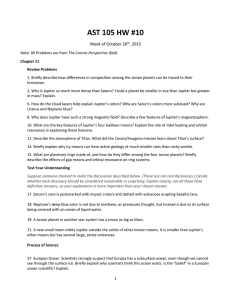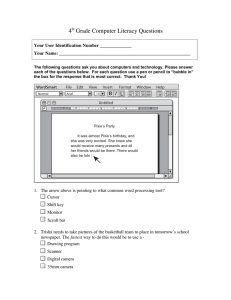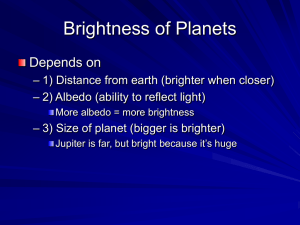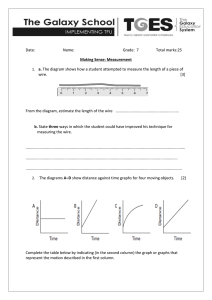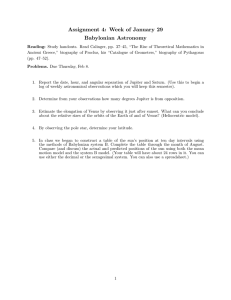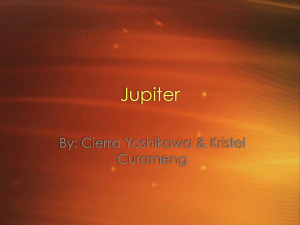The Jovian Basketball Hoop Middle/high school grades
advertisement
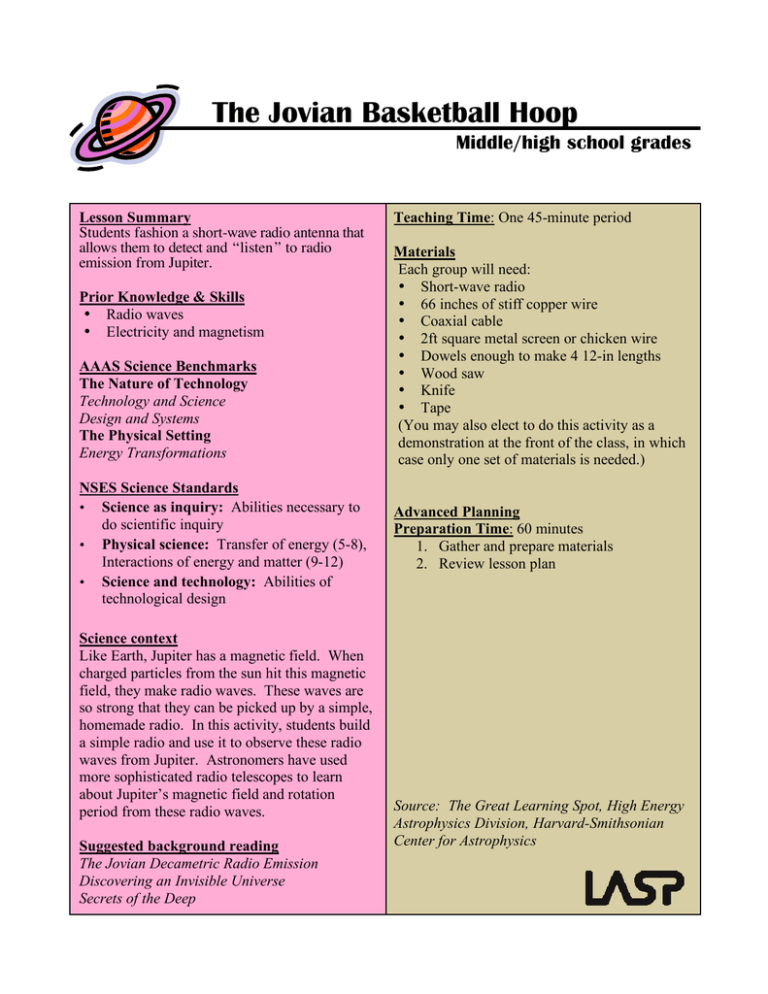
The Jovian Basketball Hoop Middle/high school grades Lesson Summary Students fashion a short-wave radio antenna that allows them to detect and “listen” to radio emission from Jupiter. Prior Knowledge & Skills • Radio waves • Electricity and magnetism AAAS Science Benchmarks The Nature of Technology Technology and Science Design and Systems The Physical Setting Energy Transformations NSES Science Standards • Science as inquiry: Abilities necessary to do scientific inquiry • Physical science: Transfer of energy (5-8), Interactions of energy and matter (9-12) • Science and technology: Abilities of technological design Science context Like Earth, Jupiter has a magnetic field. When charged particles from the sun hit this magnetic field, they make radio waves. These waves are so strong that they can be picked up by a simple, homemade radio. In this activity, students build a simple radio and use it to observe these radio waves from Jupiter. Astronomers have used more sophisticated radio telescopes to learn about Jupiter’s magnetic field and rotation period from these radio waves. Suggested background reading The Jovian Decametric Radio Emission Discovering an Invisible Universe Secrets of the Deep Teaching Time: One 45-minute period Materials Each group will need: • Short-wave radio • 66 inches of stiff copper wire • Coaxial cable • 2ft square metal screen or chicken wire • Dowels enough to make 4 12-in lengths • Wood saw • Knife • Tape (You may also elect to do this activity as a demonstration at the front of the class, in which case only one set of materials is needed.) Advanced Planning Preparation Time: 60 minutes 1. Gather and prepare materials 2. Review lesson plan Source: The Great Learning Spot, High Energy Astrophysics Division, Harvard-Smithsonian Center for Astrophysics The Jovian Basketball Hoop MATERIALS: short-wave radio, 66 inches of stiff copper wire, a length of coaxial cable, 2ft square of metal screen or chicken wire, dowels enough to make 4, 12inch lengths, wood saw, knife, and tape. 1. (Please refer to the drawing) Bend the stiff wire around a school garbage can, making an unconnected loop. 2. Carefully cut the dowels into 4 lengths of 12-inches each. Tape these vertically at set points around the wire loop. 3. Turn the loop over and tape the free end of each stick to the square of screen/chicken wire. The loop should now sit on top of the 12 inch dowels which are taped to the screen base. 4. With a knife, most carefully slit open one end of coaxial cable so that you can see the different layers inside. Peel off the plastic covering and pull back the metal foil. DO NOT TEAR OFF THE FOIL! Twist the foil into a long strand and bend to the side. Cut off the remaining plastic to get to the copper wire inside. Connect this copper wire to one free end of the loop and connect the foil twist to the screen. 5. Expose the other free end of the coaxial cable and attach this to the antenna base of the short-wave radio. In other words, your Jovian Hoop now functions as the radio's new antenna. 6. Using an almanac or sky calendar, locate the position of Jupiter in the day or night sky. Although the Jovian Hoop does not need to be pointed too accurately at Jupiter, it is best to prop the Jovian Hoop on to an easel or on blocks, books, etc, until it roughly points to Jupiter's location. 7. Turn on the radio and tune to the area of 18-22 MHz. The radiation you will hear should sound like waves crashing on a beach. The white noise of unclear stations may confuse you, but the Jovian decametric radiation will be distinguishable because of the surging quality of the sound. Do not be discouraged if it takes several tries to receive the emissions. Inspect your set-up carefully and try later. 8. (Optional, great for Science Fairs) Students may wonder if there is ever a difference in the sound through time. The answer is yes, and they should consider recording the sound during different times of the week. Recall that material from Io rushes up to Jupiter's atmosphere all of the time. Proper timing of the recordings with the passing of Io between the Earth's line of sight and Jupiter will provide interesting results to those patient enough to make continued measurements. (Recall also that Io orbits Jupiter in just under 2 days...observations made carefully over a few days will provide interesting results. Students may want to record the emissions for further and more careful analysis. The earphone jack of the radio can be connected to a tape recorder or reel-to-reel machine for recordings. DISCUSSION: What have students learned about astronomical observing? Is it possible to make detailed observations with even the crudest of instruments? Were students surprised to be able to make observations in the daytime? Why can the Jovian Hoop "see" Jupiter but our eyes cannot? Hint: why is the sky blue? Which was more fun -- making the Jovian Hoop, predicting the results, or listening to Jupiter? Do answers to this question show students that astronomy can be engineering, theory, and observation?
